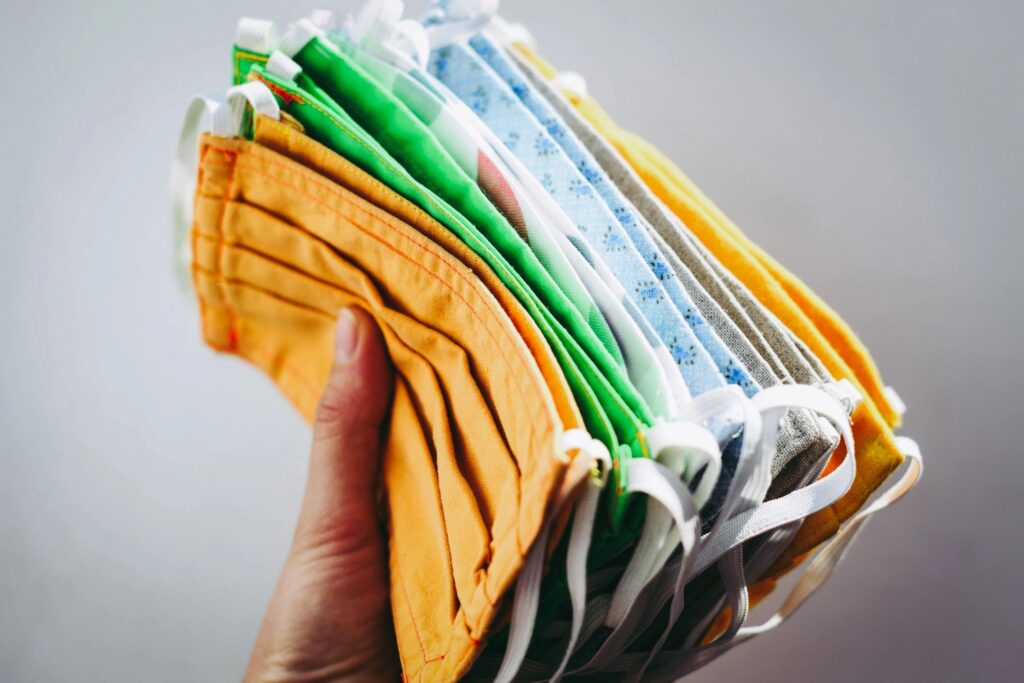Chow Line: Face masks and eating


Chow Line: Face masks and eating
I now wear a mask every time I leave my house, and I plan to do so as long as we are faced with the COVID-19 pandemic. But I haven’t figured out how to eat or drink with a mask on. Do I take it off or pull it up between bites? Any tips on what to do?
As states ease their stay-at-home orders and people return to venturing out of the house, your question of how to eat or drink while wearing a face mask is one that is likely to come up frequently.
According to published reports, some restaurants in Hong Kong, for example, have begun providing patrons with a clean bag to store their masks in while they eat at the restaurant. With that in mind, if you do plan to eat when out in public, you should carefully take your mask off completely without touching the outside of the mask, said Sanja Ilic, food safety state specialist with Ohio State University Extension, the outreach arm of The Ohio State University College of Food, Agricultural, and Environmental Sciences.
“The best practice is not to reuse the mask before it be can be properly cleaned,” she said. “One option would be to have a second, cleaned mask that you can put on after eating. Also, before eating, you need to wash or sanitize your hands after removing your mask.”
It’s also important to know how to take off your mask safely, Ilic said, because proper use of face masks might help restrict the spread of the virus from an infected person or prevent a healthy person from becoming infected. Improper use could cause the opposite, she said.
“Masks and cloth face coverings should be handled assuming they are contaminated with the virus causing COVID-19,” Ilic said. “As such, face coverings should be removed without touching the outside of it or your eyes, nose, or mouth. The mask or face covering should be immediately placed with dirty laundry or stored in a plastic bag until they can be properly cleaned.”
Also, people should be careful not to touch their eyes, nose, or mouth when removing their face covering, and they should wash their hands immediately after removing their mask.
Ilic said face coverings can be an effective means of slowing the spread of the infectious agent for many respiratory illnesses and might help slow the spread of COVID-19.
“But, wearing a face covering does NOT provide complete protection and does not replace other ways of slowing virus spread,” she said.
According to the Centers for Disease Control and Prevention, here are some ways to slow the spread: practicing good social distancing by staying at home; avoiding contact with others, and staying at least 6 feet away from others when out in public; washing your hands with soap for 20 seconds and using hand sanitizer often; and avoiding touching your eyes, nose, and mouth.
When choosing and wearing a face mask, the CDC says the mask should:
- fit snugly but comfortably against the side of your face.
- be secured with ties or ear loops.
- include multiple layers of fabric.
- allow for breathing without restriction.
- be able to be laundered and machine-dried without damaging or changing its shape.
- cover your mouth and nose with no gaps between your face and the mask.
Additionally, the CDC says to:
- wash or sanitize your hands before putting on a mask, every time the covering is touched, and immediately after removing the mask.
- put the mask on, grasp the mask and pinch it at the ear loops or grasp the upper ties. For ear-loop-style masks, secure the ear loops behind the ears. For tie-back-style masks, secure the upper ties behind your head first, then secure the lower ties behind your head. Always put the same side of a reused mask against the face.
- remove the mask slowly and carefully without touching the outside of it or the eyes, nose, or mouth. Remove ear-loop masks by holding the ear loops. Remove tie-back masks by untying the lower ties first and the upper ties last; ensure that the ties don’t fall into the clean, interior side of the mask. If the mask will be reused, place it in a bag until it can be laundered.
- wash the cloth mask after each use with regular detergent and warm/hot water, then dry it thoroughly in the dryer.
It’s also important that you don’t wear a mask that hasn’t been cleaned thoroughly, or one that is soiled, torn, saturated, or damaged, Ilic said.
“Remember, you can still get infected by touching your eyes, nose, or mouth, so don’t let the mask provide you with a false sense of security,” she said.
Chow Line is a service of The Ohio State University College of Food, Agricultural, and Environmental Sciences and its outreach and research arms, Ohio State University Extension and the Ohio Agricultural Research and Development Center. Send questions to Chow Line, c/o Tracy Turner, 364 W. Lane Ave., Suite B120, Columbus, OH 43201, or [email protected].









